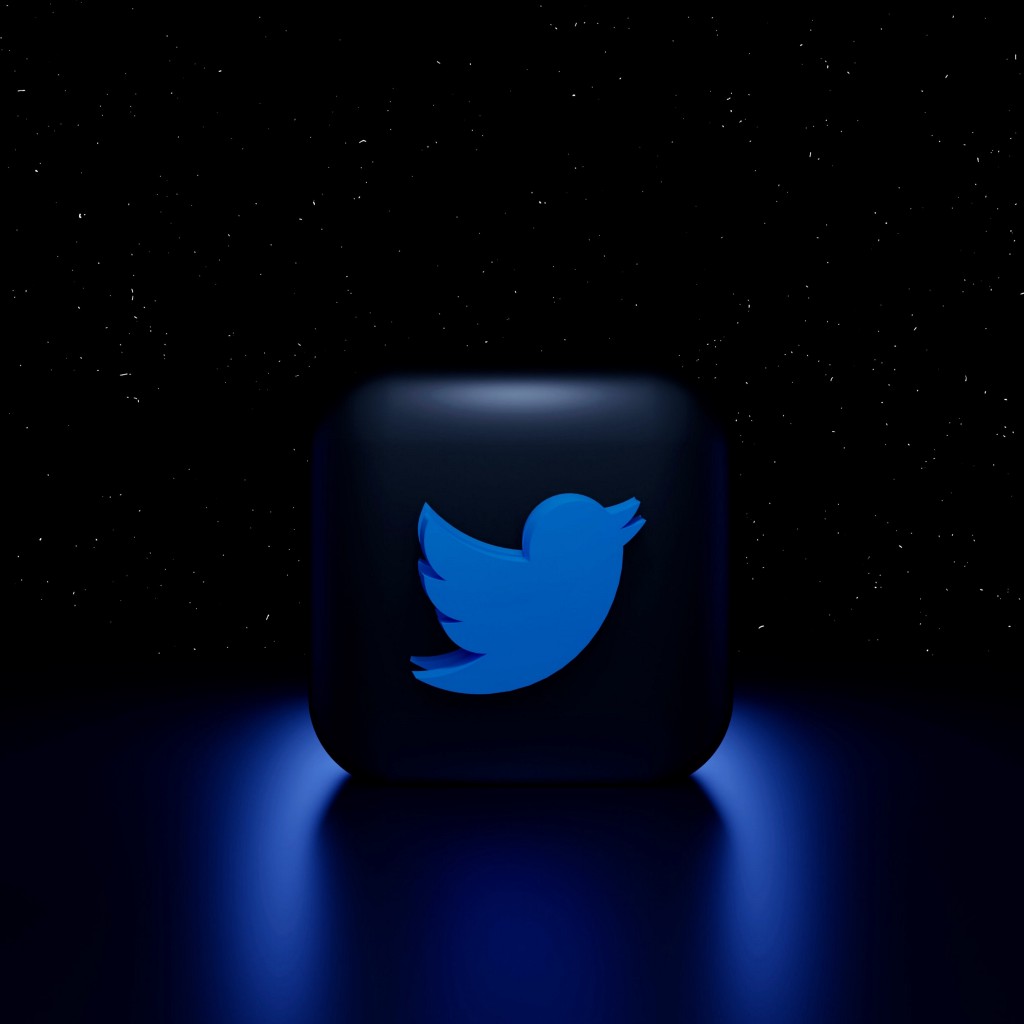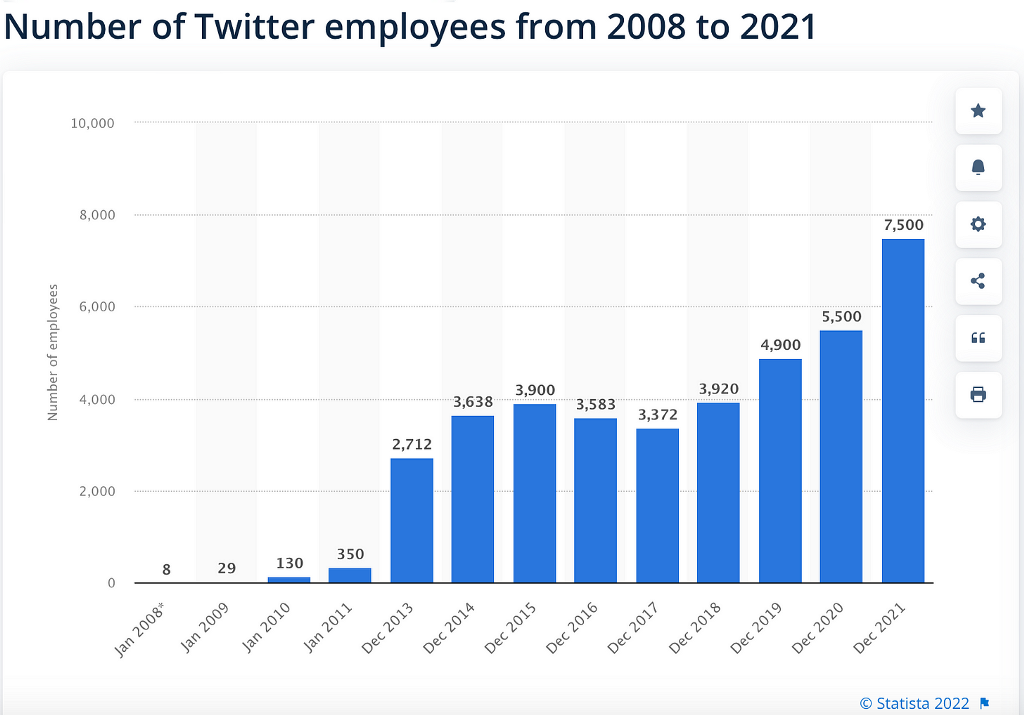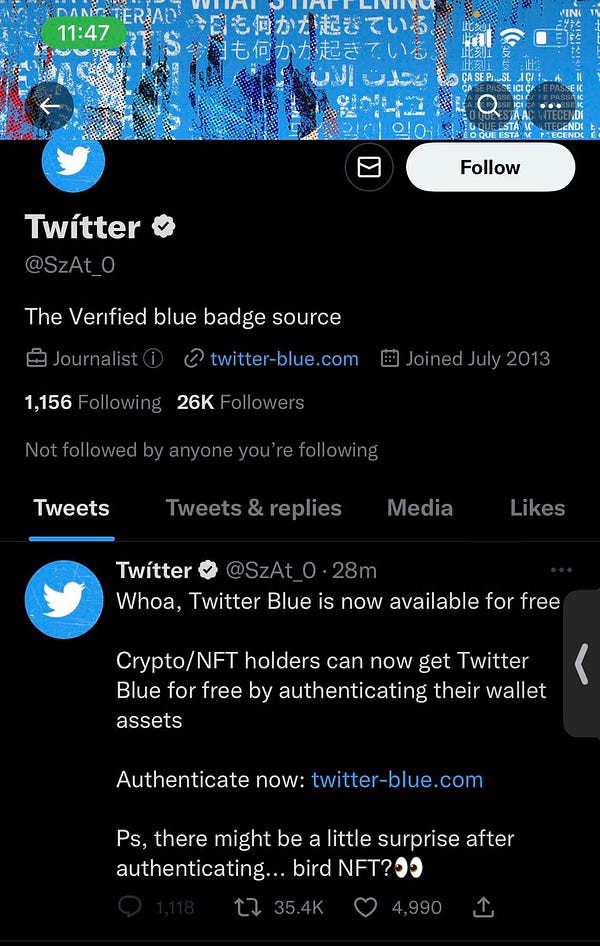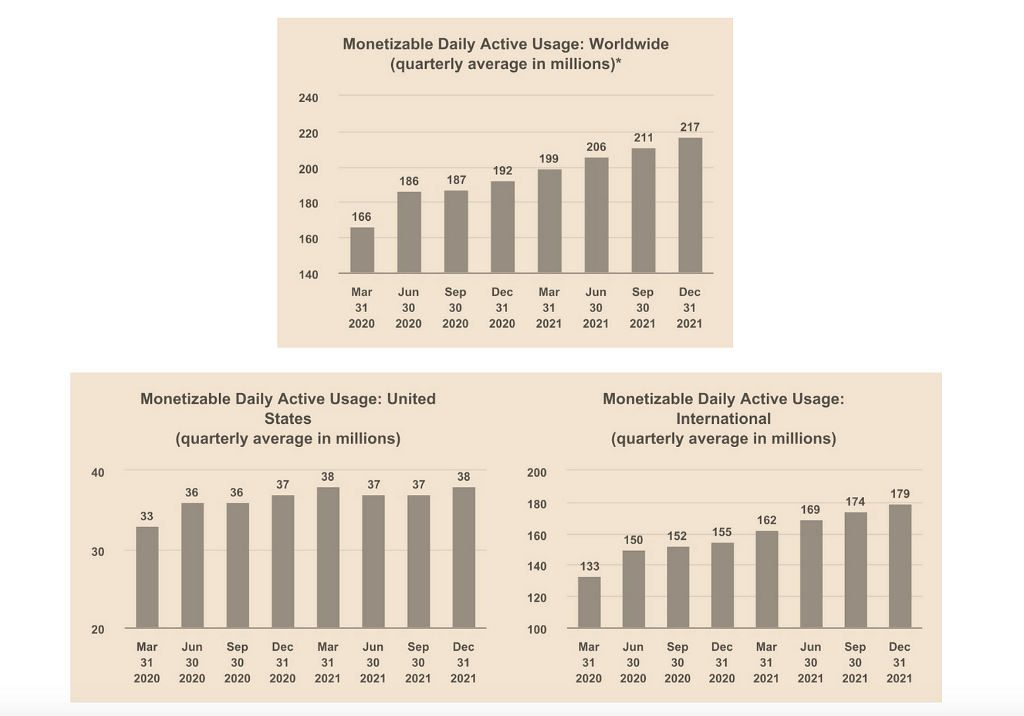Is Twitter’s Future In Jeopardy?
Good Decisions come from experience. Experience comes from making bad decisions.”- Mark Twain.
The world’s most valuable automaker today, Tesla, was on the verge of bankruptcy in 2008. Merely three days from bankruptcy filing, Elon Musk could have lost all his fortune as he invested all his money into Tesla.
However, there was a twist, and fortunately, Tesla obtained funding on Christmas eve, and it came back from the clutches of bankruptcy.
Fast forward to 2018, and Musk was again a month away from giving up as Model 3 production was way sluggish than anticipated, and a price tag of “just” $35,000 failed to entice buyers into the EV world.
Nevertheless, the pandemic transformed the world upside down for Tesla and Musk, and utilising Twitter as the platform, “mischievous” Musk using his “hilarious” memes, made Tesla into one of the biggest brands and largest EV makers, complemented with flawless execution.
Nonetheless, the ambitious acquisition of Twitter is giving Musk sleepless nights.
Let’s dig in!
Contours Of The Deal (LBO)!
Leveraged Buyout (LBOs) involves acquiring a company using significant leverage (borrowing vast amounts of moolah) to buy out the existing shares from its shareholders. The typical capital structure involves 90% Debt and 10% Equity.
The large LBOs have invariably occurred at the peak of the cycle and are financed by the PE giants. This is one of the reasons that most “big” LBOs have been unsuccessful, with companies subsequently going into bankruptcy and investors losing money.
The soundest example of an LBO is the RJR Nabisco LBO financed by the PE giant KKR, which at the time was the largest LBO in the history of financial markets. Nonetheless, the company was eventually broken up and sold in small parts at a loss.
Elon Musk acquired Twitter in a Leveraged Buyout (LBO) at the zenith of market craziness akin to the Dot-Com Bubble, thanks to the gargantuan post- covid monetary and fiscal stimulus. The amount that Musk paid was far, far more substantial than the value of Twitter.
When we look closely, the Twitter-Musk deal is worth $46.5 billion, which covers the $44 billion cost at an acquisition price of $54.20 and $2.5 billion the “closing costs”. The $44 billion is a mix of equity and debt.
- $13 billion is the debt financing arranged from various banks, including Bank Of America and Morgan Stanley.
- $7.1 billion was secured from equity investors like Larry Ellison and Saudi Prince Alwaleed bin Talal.
- Elon Musk already purchased a 9.6% stake in the open market before he announced the acquisition valued at $4.1 billion (at $54.20)
The remaining component of the deal is the $22.4 billion equity part. Musk already encashed $15 billion before the deal was closed by selling Tesla shares this year and has sold a further $4 billion worth of shares a fortnight back, most probably to fund the deal.
The most intriguing fact is that Musk initially was looking to take margin loans by pledging his stake in Tesla; however, he decided to drop the idea and pumped in the equity by selling more of his shares in Tesla.
In fact, the deal was put on hold by “wicked” Musk, and a dramatic sequence of events transpired before Twitter made sure that Musk bought it at any cost. (Kudos to Parag and the senior management)
All in all, Musk’s high leverage for the acquisition has resulted in a significant increase in annual interest costs from $100 million before the deal to $1.2 billion now!
That brings us to our next part!
The Cost “Optimization” Exercise!
Twitter’s finances were awful even before Musk took over. The past management mismanaged the affairs, and the inefficiency is perceptible when one digs into the numbers. So let us have a look.
- Stock-Based Compensation: One of the most significant expenses reported by Twitter, the stock-based compensation at a whopping $630 millionaccounted for around 12% of the total revenue in the last year. The numbers for the second quarter were surreal as the stock-based compensation expense jumped an enormous 55% YOY.
- The Headcount: Twitter saw spectacular growth in the employee count from 5500 to 7500 during the pandemic, and, thus, overall personnel-related costs soared by more than $600 million in the last year, as per its annual report. Surprisingly, the most considerable increase was in the R&D department.
- Stock Buybacks: $930 million of shares were repurchased by Twitter at a time when the company was reporting a paltry operating income of $272 million and an operating margin of just 5%. The numbers look bleak in the pandemic era when the big tech was generating insane cash. Nevertheless, it shows that the company was taking advantage of rock-bottom interest rates by borrowing and resorting to stock buybacks.
Twitter effectively used buybacks to transfer the cost of its outstanding stock-compensation packages to the shareholders, a strategy all the big-tech companies followed.
The Q2 results were horrendous, as Twitter reported an operating loss of $344 million and an operating margin of -29%.
Furthermore, if operational disaster was not enough, Twitter is now saddled with an annual interest burden of more than $1.2 billion.
Thus, seeing the gravity of the situation, Musk undertook sweeping transformations within the first week of acquiring Twitter (which also shows that he had been planning all along).
The first target in the cost optimisation excercise was to rid Twitter of overstaffing, which would work in two ways: firstly, it would reduce the salary expenses and stock-based compensation, and secondly, increase productivity (he has abolished the WFH policy and mandated that everyone attends the office in-person).
As a result, Musk fired 50% of the employees, including the senior management. This should considerably reduce the cost in the future.
IMO, we would see a reduction in the range of $500-$600 million annually if Musk also pares the humongous stock-based compensation.
Secondly, Musk has decided to cut infrastructure costs as he plans to close Twitter’s offices worldwide and save on lease expenses.
The cost optimisation exercise should result in annual savings of roughly $800–1 billion, which is still less than a $1.2 billion increase in interest costs. Thus, the next strategy is to maximise revenue.
Revenue “Maximisation”!
The Q2 numbers illustrate that the biggest topline driver for Twitter is “Advertising Revenue” ($1.08 billion), which constitutes 90% of overall revenue, and the subscription revenue comprises less than 10% of the top line.
As Musk began his rein at Twitter, the foremost shock he got was from the mass exodus of advertisers who buckled under the pressure of “activists”/ civil society groups and halted spending on the microblogging site.
A slew of advertisers, from General Mills to Audi and Pfizer, rescinded their partnership with Twitter as the regime change ignited fears that unmoderated content will fuel the rise of misinformation, hate speech and pornography, thus tarnishing the brand image of advertisers.
This is the biggest headache for Musk because the most prominent revenue pie is plunging just when Musk desperately requires to augment the revenue.
So, Musk examined at other avenues to boost the revenues and one of the measures he took backfired big time.
To shore up the revenue, Musk planned to launch various products. One of the most debated is “Twitter Blue”, a monthly subscription of $7.99 that offers users perks such as a blue check verification badge.
The blue tick was rolled out just days ago, and we witnessed utter chaos across the platform.
The worst fears came true as “unofficial” blue tick accounts started to spew misinformation resulting in a sharp fall in stock prices (Eli Lily, Boeing etc.).
As a result, Twitter will now roll out the much-needed revamped blue tick subscription by the end of November. Furthermore, Musk has also applied for a payment processor license with the Treasury and is working on content creator monetization to encourage content creators.
Nevertheless, these efforts will bear fruit in the long term. What Twitter needs today is a stable source of “growing” revenue that will substitute the advertising revenue as it is clear that Musk’s rein will be devoid of advertisers.
To gauge the potential revenue that the subscription model can bring, one needs to analyze the: Monetizable Daily Active Usage (mDAU) numbers which was also the bone of contention in the Twitter-Musk deals as there was a fierce debate on the number of bots. As per Twitter’s Annual Report:
We define mDAU as people, organizations, or other accounts who logged in or were otherwise authenticated and accessed Twitter on any given day through twitter.com, Twitter applications that are able to show ads, or paid Twitter products, including subscriptions.
Our measures of mDAU growth and engagement may differ from estimates published by third parties or from similarly-titled metrics of our competitors due to differences in methodology.
As per the latest results, Q2 mDAU was 237.8 million. Twitter believes the number of fake/spam/bots in the system is 5%. This is highly arguable.
Furthermore, Musk has proposed to charge users as per their purchasing power in countries outside the US. This is noteworthy since more than 80% of the users are from outside the US.
As a result, it’s challenging to ascertain the subscription revenue that Twitter will generate. However, a rough calculation IMO:
Total number of bots/spam/fake: 35%
Actual mDAU: 154.57 million
Average subscription revenue (adjusting for PPP): $5 / month
Total subscription revenue (considering 10% opts for it): $927 million (Annual)Conclusion!
Conclusion!
Elon Musk has paid a hefty sum to acquire the most controversial social media site at a time when equity valuations have crashed, and investor sentiment has turned sour towards the tech names.
As Twitter loses $4 million daily, we have seen that some of the recent “desperate” decisions to maximize revenue and optimize costs have yielded controversies.
Furthermore, the burgeoning legal costs post the mass layoffs and legacy cases will keep the legal costs high for the near future. Finally, the stringent modification in “office rules”/ culture has resulted in chaos across the platform as Twitter saw mass resignations on Thursday.
The ban of unlabelled “parody” accounts, especially those that have mocked Musk, has led to criticism of Musk and has questioned his intent of supporting “free speech”.
Since Twitter is highly used as a political tool, even the democrats are concerned and thus have urged FTC to launch an “investigation” against the platform.
Musk has a formidable task at hand, and the challenges to run Twitter keep increasing every day as advertisers, politicians and employees grow wary of “erratic” Musk and his decisions.
So, subscription revenue can easily make up for the advertising revenue loss.
However, undoubtedly it’s not enough, and Twitter needs much more sustainable growth in “paid” subscribers if it needs to survive.
The Emperor Has No Clothes! was originally published in DataDrivenInvestor on Medium, where people are continuing the conversation by highlighting and responding to this story.





Comments